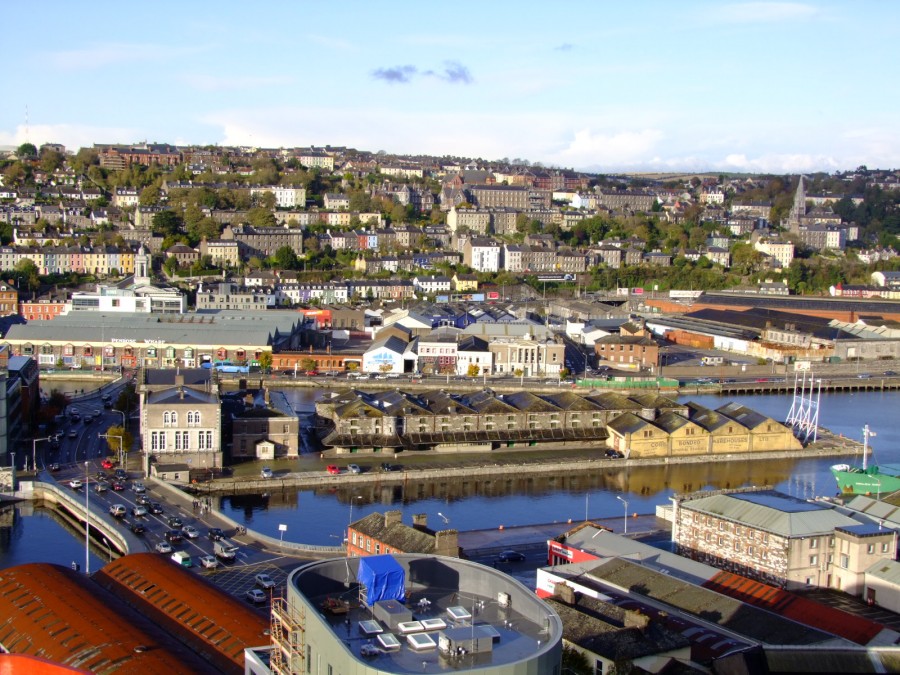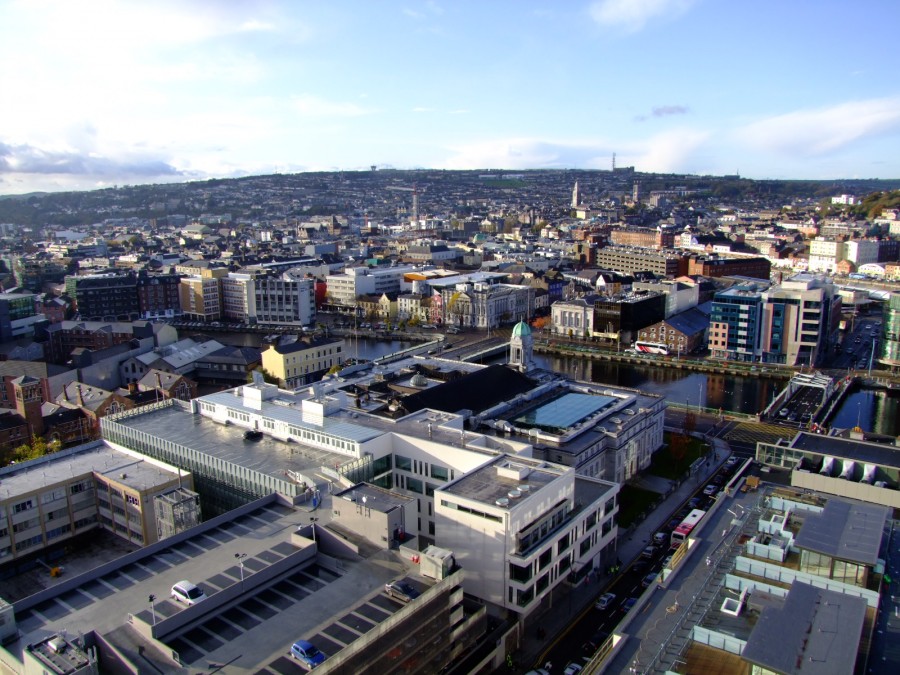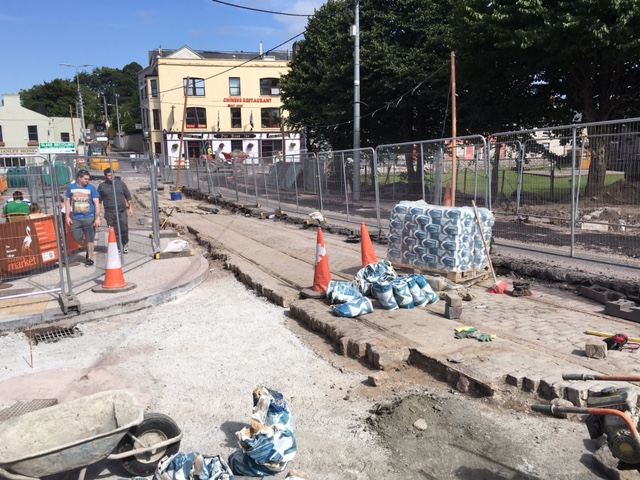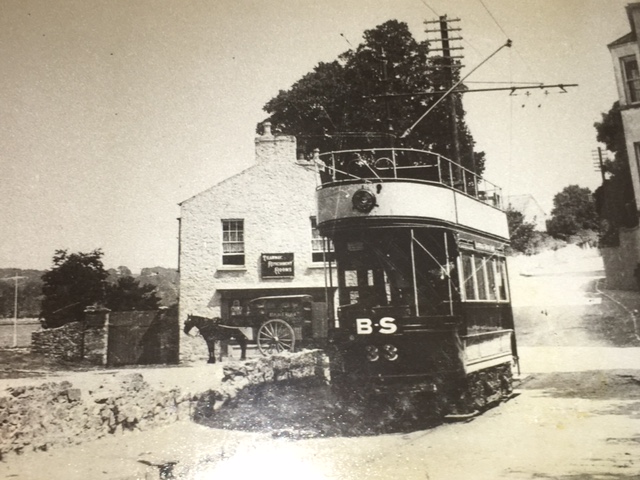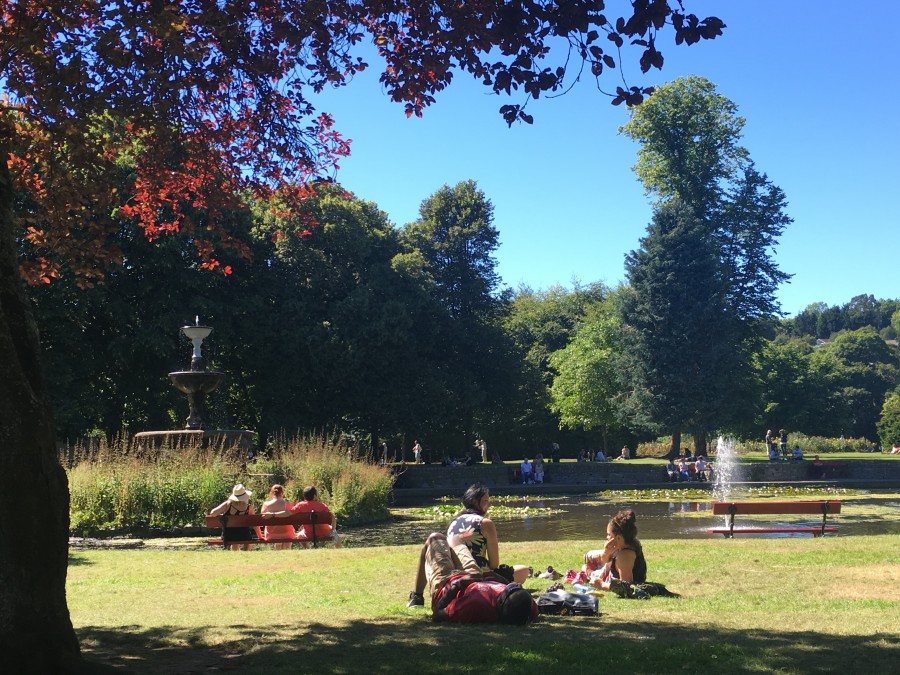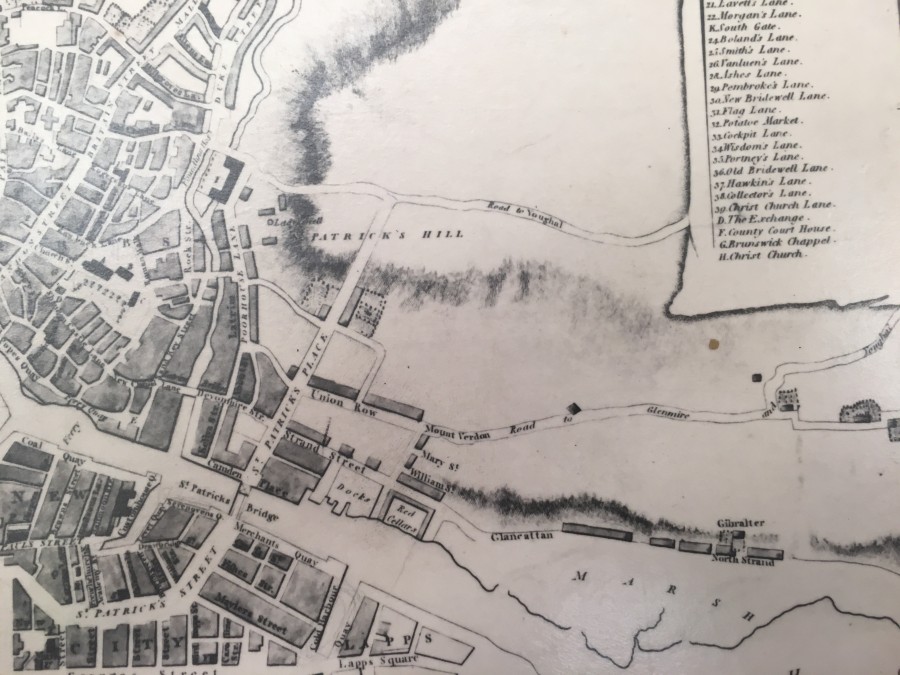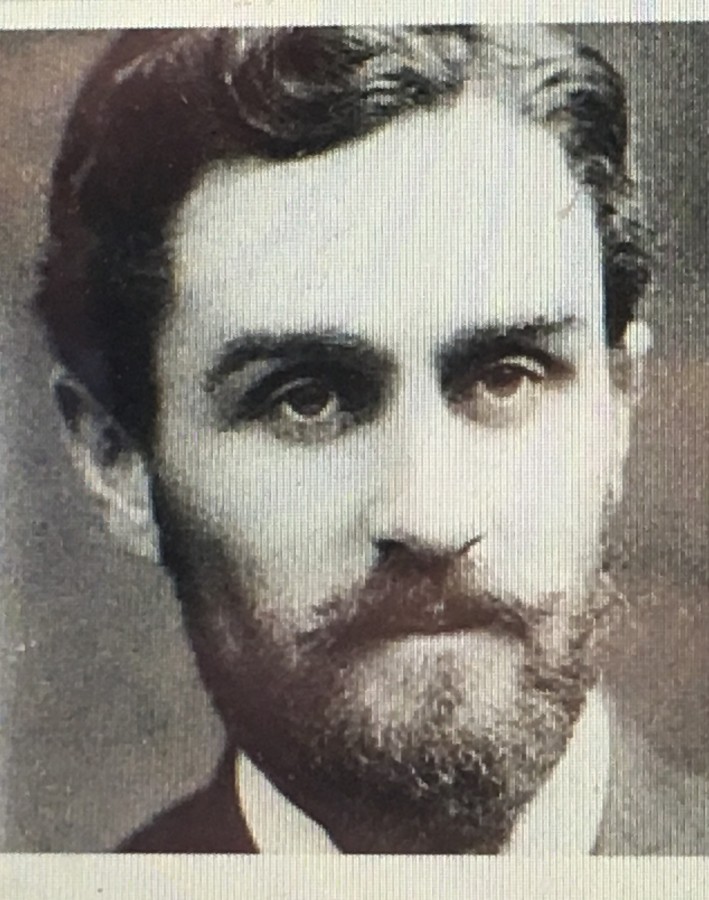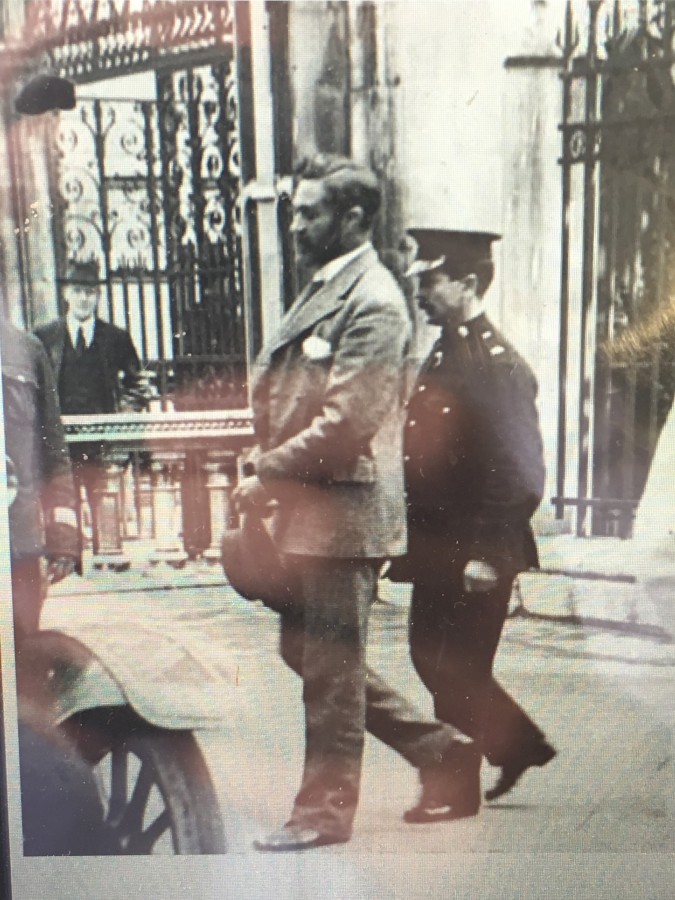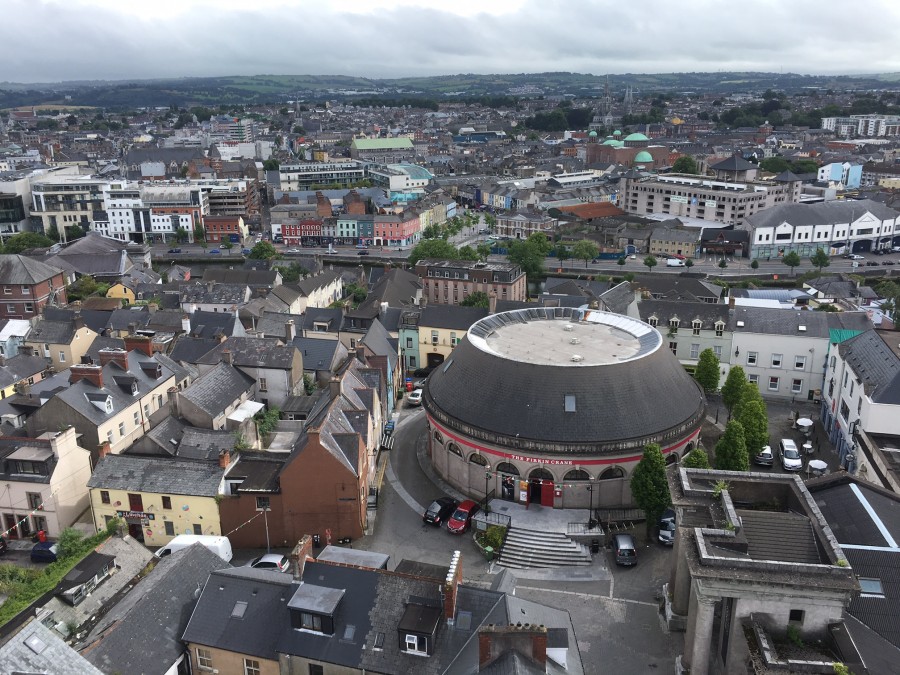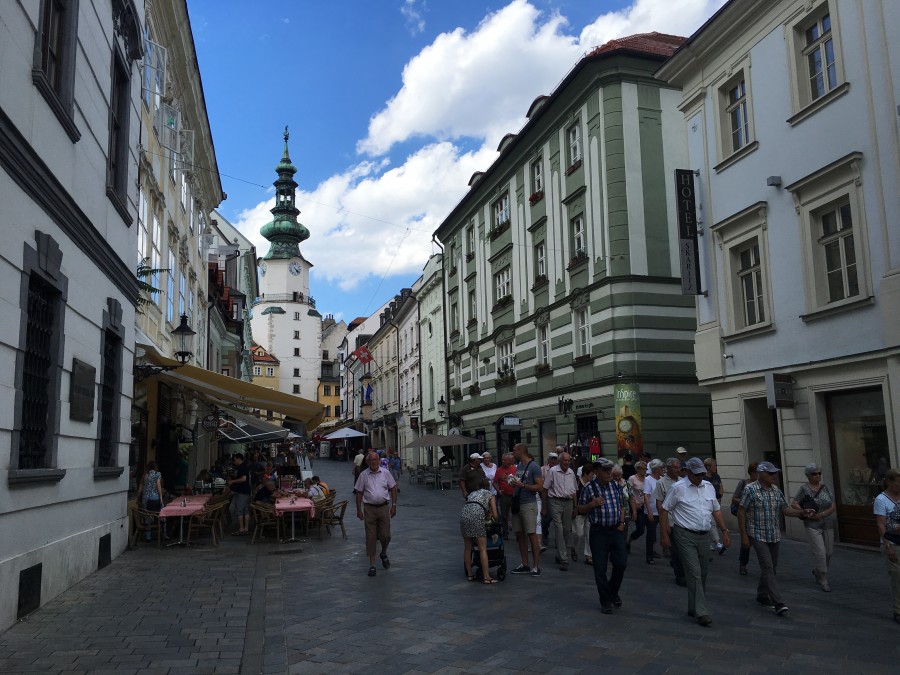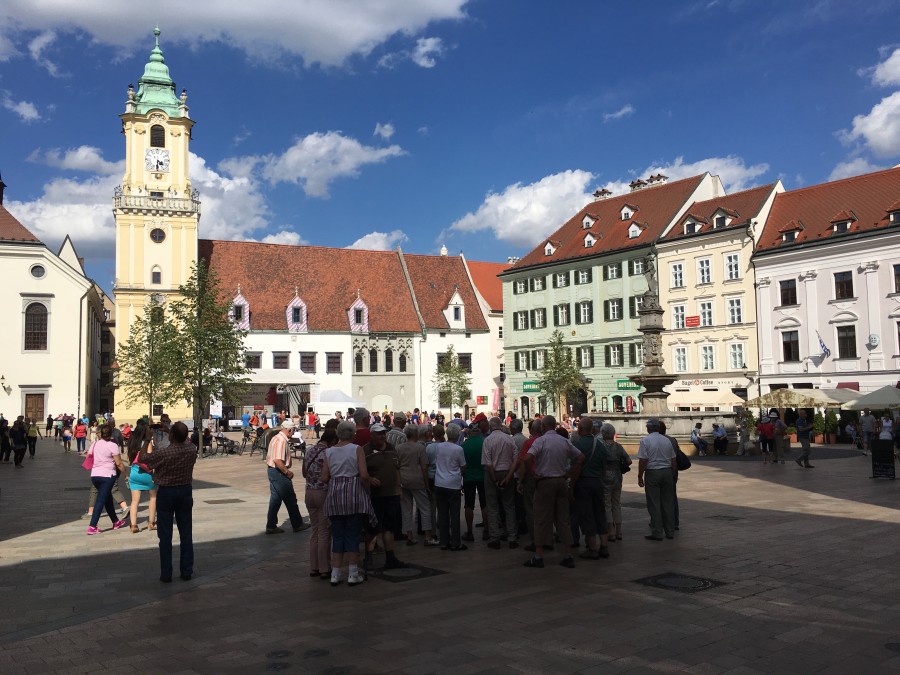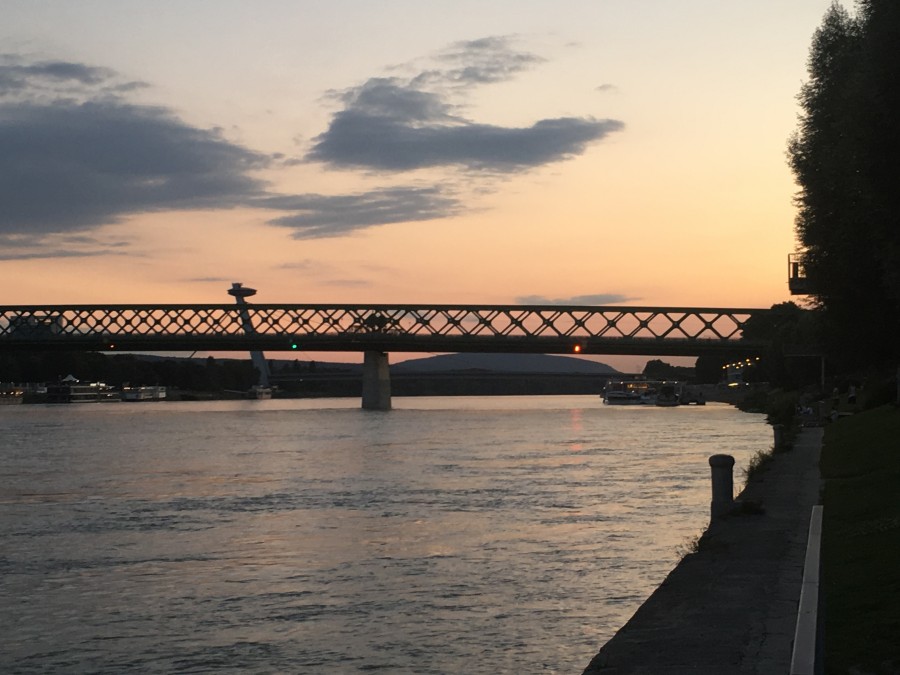Always a great family day out, please support
Kieran’s Our City, Our Town, 18 August 2016
Kieran’s Our City, Our Town Article,
Cork Independent, 18 August 2016
Cork Heritage Open Day 2016
Another Cork heritage open day is looming. The 2016 event will take place on Saturday 20 August. For one day only, over 40 buildings open their doors free of charge for this special event. Members of the public are allowed a glimpse of some of Cork’s most fascinating buildings ranging from the medieval to the military, the civic to the commercial and the educational to the ecclesiastical. This event was greeted with great enthusiasm by building owners and members of the public alike in 2015 with an estimated 25,000 people participating in the day.
It is always a great opportunity to explore behind some of Cork’s grandest buildings. With the past of a port city, Cork architecture has a personality that varied and much is hidden amongst the city’s narrow streets and laneways. It is a photogenic city, which lights up with sunshine as it hits the limestone buildings. Much of its architecture is also inspired by international styles – the British style of artwork and nineteenth century brick pervading in most cases– but it’s always pays to look up in Cork and marvel at the Amsterdamesque-style of our eighteenth century structures on streets such as Oliver Plunkett Street or at the gorgeous tall spires of the city’s nineteenth-century churches.
Cork Heritage Open Day is twelve years in the making and with 40 buildings it is almost impossible to visit them all in one day. It takes a few goes to get to them all and spend time appreciating their physical presence in our city but also the often hidden context of why such buildings and their communities came together and their contribution to the modern day picture of the city. The team behind the Open Day, Cork City Council, do group the buildings into general themes, Steps and Steeples, Customs and Commerce, Medieval to Modern, Saints and Scholars and Life and Learning – one can walk the five trails to discover a number of buildings within these general themes. These themes remind the participant to remember how our city spreads from the marsh to the undulating hills surrounding it, how layered and storied the city’s past is, how the city has been blessed to have many scholars contributing to its development in a variety of ways and how the way of life in Cork is intertwined with a strong sense of place and ambition. For a small city, it packs a punch in its approaches to national and international interests.
The trail Medieval to Modern is a very apt way to describe the layers of our city. The trail walk encompasses some of the amazing buildings in the city centre, but also some where you come away going, “why haven’t I seen this hidden gem before”. Admire the historic frontage of the Princes Street Unitarian Church, examine the coat of arms and symbols within the Masonic Hall, explore the “Modest Man” in Christ Church, re-imagine the past court cases in the Cork Circuit Court House, revel in life in an eighteenth century merchant’s house in Fenn’s Quay, discover Cork one hundred years ago through exhibitions in St Peter’s Cork on North Main Street, get lost in the street and harbour views of Cork in the Crawford Art Gallery, stand under the proscenium arch in Cork Opera House, and walk the winding staircase of Civic Trust House. All of these buildings celebrate life in Cork, an active populace constructing the senses of place in Cork, and all relate the multitude of memories, which ignite the ambitious streak in the city’s development DNA.
Meanwhile down by the river, the Customs and Commerce trail follows the Lee and showcases some of the old and new commercial buildings in the city. These buildings track the commercial history of Cork City and highlight its many industries over time. For the more energetic walker this route can be combined with the Medieval to Modern walking route. Re-imagine the turning of the wheels of the trams at the National Sculpture Factory, learn about local government in the City Hall, think highly of the multiple stories of the city’s masons and carpenters at the Carpenter’s Hall, feel the energy of the steam ships in the maritime paintings in the city’s Custom House, and look at the fine details on the pillars within AIB Bank on the South Mall.
The Custom House was designed by William Hargrave in 1881 and built at Custom House Street between the north and south channels of the River Lee. At the time its main work dealt with inland revenue. In 1904 the Cork Harbour Commissioners took over the building on a 999 year lease. In 1906 a magnificently ornate boardroom, designed by William Price, the then Harbour Engineer, was added to the building. Equally impressive is the Committee Room, a dark wood panelled room, with pale cream and gold wallpaper and a delicately patterned ceiling. The Boardroom and Committee Room house a fine collection of maritime artwork owned by the Port of Cork Company.
See www.corkheritageopenday.ie for more information on the city’s great heritage open day and then followed by Heritage Week (information at www.heritage week.ie). My tours are posted at www.kieranmccarthy.ie under the walking tours section or follow my facebook page, Cork Our City, Our Town.
Captions:
857a. Custom House and Cork Docks, view from the top of Elysian Tower (picture: Kieran McCarthy)
857b. City Hall Complex and the city centre island beyond, view from the top of the Elysian Tower, present day (picture: Kieran McCarthy)
Tram Tracks at Blackrock Pier, August 2016
The rediscovery of the tram tracks at Blackrock Pier has created much enthusiasm and many historical questions. Some of the answers may be below:
The tram tracks will be re-incorporated into the pier regeneration project.
Whose vision was it?
Circa 1897 the Corporation of Cork planned to establish a large electricity generating plant. The plant would provide public lighting and operate an electric tramcar extending from the city centre to all of the popular suburbs.
The site of the new plant was on Monarea Marshes (now the National Sculpture Factory) near the Hibernian Buildings.
The Electric Tramways and Lighting Company Ltd, was registered in Cannon Street, London and had a close working relationship with eminent electrical contractors, the British Thomson-Houston Company. This latter English company were appointed the principal contractors.
Who built the street track?
The street track was completed by William Martin Murphy, who was a Berehaven man, but with a company in Dublin (the Dublin 1913 lockout employer). Murphy was the first chairman of the Cork Company.
Leading Cork housing contractor, Edward Fitzgerald, soon to become Lord Mayor of Cork, completed the building of the plant. To provide proper foundations for the large plant, extensive quantities of pitch pine were sunk under the concrete.
Mr Charles H. Merz, one of British Thomson-Houston’s up and coming engineers, supervised the electric tramcar system. He became the secretary and head engineer for the Cork operation. Merz was a native of Newcastle-upon-Tyne, and arrived in Cork during the laying of track and near completion of the plant.
What were the termini?
Cork was to become the eleventh city in Britain and Ireland to have operating electric trams. Four of the six suburban routes were complete for the line’s commencement.
The eventual termini included Sunday’s Well, Blackpool, St. Luke’s Cross, Tivoli, Blackrock and Douglas.
When did the tram car system officially open?
Eighteen tramcars arrived in 1898 for the opening, which occurred on 22 December.
How many trams were in operation in Cork City at the turn of the twentieth century?
By 1900, 35 electric tram cars operated throughout the city and suburbs.
For 33 years, the Cork electric trams wandered the city and its suburbs, and provided a needed service and employment for 260 employees.
Describe a tram car?
These were manufactured in Loughborough, U.K. All were double deck in nature, open upstairs with a single-truck design. There were minor variations in many of the cars. Six of the trams had a luxury design. They had a longer roof and their ends were curved, which provided extra seating upstairs and a cover for the driver and conductor. Passengers on the lower level sat on two long slated timber seats. Upstairs, there were short seats at either side of a central passageway.
Most tram cars could hold at least 25 people upstairs and 20 downstairs. However, in rush hour situation, some trams were known to have carried 70 citizens. However, a key rule on the tram was that nobody could sit or stand on the driver’s front platform.
What was the fare?
Circa 1900, a single fare to any of the suburbs served by the trams was one penny. The fare did rise up to three and half pence by 1910 but had dropped to two pence by 1930.
What colour were the tram cars?
In the early years of the twentieth century, large white indicator boards at the front of the trams identified their destination. These had the initials of the terminus or where the tram was travelling. For example, Blackpool was shown by B.P. and Douglas by D.S. In the second decade of the 1900s, small rectangular plates in different colours replaced the boards.
Each displayed the full name of the destination. The name was located over the numbers and on the side of the cars as follows; Douglas–white; Blackrock-brown, Tivoli-yellow; Sunday’s Well and Summerhill-red and Blackpool-dark blue.
To identify clearly the trams at nights, the relevant officials fitted lighted bulbs of the different colours. Instead of a brown bulb for Blackrock, a green bulb was used.
Where did the company complete their repairs and alterations?
Repairs and alterations to any of the tramcars were completed at the Albert Road depot. A special tramway watering tram car sprayed water from its large attached tank on both sides of the track in order to keep the durst down. A number of tower wagons, pulled by horses, also operated on the various lines to give access to workers to fix any cables if necessary.
Were there any track problems?
On the majority of the routes, there were outbound and city bound tram tracks. However, on a number of routes, especially the Douglas and Blackrock routes, single-track sections were in operation. Thus, when the driver reached the end of the loop and therefore, the entry to a single-track section, he left his platform.
The driver then went to a box on an adjacent pole, flicked a switch, which turned on a light on the pole at the other end of the track. This warned any drivers of any approaching trams. Of course, this is also the first evidence for electric traffic lights in Cork. Problems were encountered with several reports of trams having to reverse or passengers changing trams for the convenience of the relevant drivers.
Who used the trams?
In the first decade of the 1900s, the electric trams did played a large part in providing much needed public transport. Professional men living in the suburbs and working in the city used the service regularly.
Young recruits used the service to travel to Victoria Barracks, so that they could train for the Boer War (1899-1900). The International Exhibition, which graced the lands of the Mardyke in 1902 / 1903, coincided with the trams working overtime as Corkonians packed into the cars to travel out the Western Road.
Hurling and Football matches at the Cork Athletic Grounds, located near the Marina brought much business on Sundays on the Tivoli and Blackrock lines. Many citizens would travel to Tivoli to catch a regular ferry service across the river.
What happened the trams?
From 1925 onwards, a new form of public transport appeared on the streets in Cork that of the motor bus. In 1926, Captain A.P. Morgan, retired officer of the British Army, financed and introduced four Daimler double decker 44 seater buses.
City Commissioner, Philip Monahan, later to be an eminent City Manager, governed the motor bus affairs. Soon buses were running form the city centre to the south west, south east, south and north western suburbs.
The electricity supply as a private development in Cork was hindered by the Irish Free State’s Shannon Scheme – hydro-electrification plant of the late 1920s.
New tarred roads replaced muddy suburban and urban roads. Thus, cycling without severe struggling became more possible for Corkonians.
On 30 September 1931, the final abandonment of the trams occurred. Fireworks, cheering and souvenir collecting were all aspects of general public’s final goodbye.
Key sources of information:
A detailed history of the trams can be found in Walter McGrath’s (1981) Tram Tracks Through Cork, available to consult in the City Library on the Grand Parade. Also check out the online newspaper archive for the Irish Examiner at www.irishnewspaperarchive.com.
Kieran’s Our City, Our Town, 11 August 2016, Heritage Week Walking Tours
Kieran’s Our City, Our Town Article,
Cork Independent, 11 August 2016
Kieran’s Heritage Week Tours, 20-28 August 2016
National Heritage Week is upon us again at the end of next week (20th – 28th August). It’s going to be a busy week. For my part I have organised six tours. These are all free and I welcome any public support for the activities outlined below. There are also brochures detailing other events that can be picked up from Cork City Hall and City libraries. If you are up the country on holidays, check out www.heritageweek.ie for the listings of national events. It is always a great week to get out and explore your local area and avail of talks, trails and a wide range of family events.
Heritage Open Day:
Saturday 20 August 2016 – Historical Walking Tour of City Hall with Kieran, learn about the early history of Cork City Hall and Cork City Council, learn about the development of the building and visit the Lord Mayor’s Room, 11am, ticketed (free, duration: 75 minutes); contact The Everyman Palace, 0214501673.
The current structure, replaced the old City Hall, which was destroyed in the ‘burning of Cork’ in 1920. It was designed by Architects Jones and Kelly and built by the Cork Company Sisks. The foundation stone was laid by Eamonn de Valera, President of the Executive Council of the State on 9 July 1932 (www.corkheritageopenday.ie).
Kieran’s Heritage Week, 20-27 August 2016:
Sunday, 21 August 2016, Eighteenth Century Cork, Branding a City: Making a Venice of the North; historical walking tour with Kieran on how streets like Oliver Plunkett Street and French Church Street came into being; meet at the City Library, Grand Parade, 7pm (free, duration: two hours, www.corkheritage.ie)
Monday 22 August 2016, The Victorian Quarter; historical walking tour (new) with Kieran of the area around St Patrick’s Hill – Wellington Road and McCurtain Street; meet at Audley Place, top of St Patrick’s Hill, 7pm (free, duration: two hours, www.corkheritage.ie)
This is a new tour that hopes to bring the participant from the top of St Patrick’s Hill to the eastern end of McCurtain Street through Wellington Road. The tour will speak about the development of the Victorian Quarter and its hidden and beautiful architectural heritage. All are welcome and any old pictures and documents that people have of these areas, please bring along.
Tuesday 23 August 2016, Cork Docklands, historical walking tour with Cllr Kieran McCarthy; Discover the history of the city’s docks, from quayside stories to the City Park Race Course and Albert Road; meet at Kennedy Park, Victoria Road, 7pm (free, duration: two hours)
Thursday 25 August 2016, The City Workhouse, historical walking tour with Kieran; learn about the workhouse created for 2,000 impoverished people in 1841 (the year 2016 marks the 175th anniversary of the site’s creation), meet at the gates of St Finbarr’s Hospital, Douglas Road, 7pm (free, duration: two hours).
The Cork workhouse, which opened in December 1841, was an isolated place – built beyond the toll house and toll gates, which gave entry to the city and which stood just below the end of the wall of St. Finbarr’s Hospital in the vicinity of the junction of the Douglas and Ballinlough Roads. The Douglas Road workhouse was also one of the first of over 130 workhouses to be designed by the Poor Law Commissioners’ architect George Wilkinson.
Friday 26 August 2016, The Walk of the Friars; historical walking tour (new) with Kieran, explore the local history from Red Abbey through Barrack Street to Friars Walk; meet at Red Abbey tower, Mary Street, 7pm (free, duration: two hours)
This new walking tour begins on Red Abbey square and explores the area’s medieval origins and the impact on the area. In such a small corner of the city, post medieval Cork and the story of industrial housing can be told, as well as stories of St Stephen’s School, Callanan’s Tower, Elizabeth Fort and the Gallows at Greenmount.
Saturday 27 August 2016, Fitzgerald’s Park; historical walking tour with Kieran; learn about the story of the Mardyke to the great early twentieth century Cork International Exhibition, meet at band stand, 2pm, note the afternoon time (free, duration: two hours)
Looking at the physical landscape of the Park, there are clues to a forgotten and not so familiar past. The entrance pillars on the Mardyke, the Lord Mayor’s Pavilion, the museum, the fountain in the middle of the central pond dedicated to Fr Mathew and timber posts eroding in the river were once parts of one of Cork’s greatest historical events, the Cork International Exhibitions of 1902 and 1903. Just like the magical spell of Fitzgerald’s Park, the Mardyke exhibitions were spaces of power. Revered, imagined and real spaces were created. They were marketing strategies where the past, present and future merged; aesthetics of architecture, colour, decoration and lighting were all added to the sense of spectacle and in a tone of moral and educational improvement. The entire event was the mastermind of Cork Lord Mayor Edward Fitzgerald, after which the park got it name.
Hope to see you on some of these tours…
Captions:
856a. Fitzgerald Park during recent sunny weather (picture: Kieran McCarthy)
856b. Map of St Patrick’s Hill area 1801 (source: Cork City Library)
Kieran McCarthy, Cork Heritage Open Day, 20 August 2016
Cllr Kieran McCarthy will take part in Cork Heritage Open Day on Saturday 20 August 2016 through giving a tour of Cork City Hall. The open day is a unique event, which is held on the first Saturday of Cork Heritage Week. Organised by Cork City Council, Cork Heritage Open Day it will see over 42 buildings open their doors to the public for one day only. A series of guided walking tours, heritage events, exhibitions, talks and children’s events will also take place. All events are free.
Cork Heritage Open Day is organized by Cork City Council as part of Heritage Week in partnership with the Heritage Council and with media sponsorship from Cork’s 96FM and the Evening Echo.
A tour of City Hall by Cllr Kieran McCarthy will take place at 11am, which will include the architecture and history of the building and finishing with a visit to the Lord Mayor’s Chamber. This event is one of several building tours to be held on the 20th August. They are all free but some tours of buildings are ticketed. Please see www.corkheritageopenday.ie for more information or pick up a Cork Heritage Open Day brochure from the City’s libraries.
Cllr McCarthy noted; “City Hall is one of the most splendid and historic buildings of Cork. The current structure, replaced the old City Hall, which was destroyed in the ‘The burning of Cork’ in 1920. It was designed by Architects Jones and Kelly and built by Cork Company Sisks”. The foundation stone was laid by Eamonn de Valera, president of the Executive Council of the State on 9th July, 1932. The first meeting of the Council was held on 24th April, 1935 and the building was formerly opened by Eamonn de Valera on 8th September 1936. Kieran also has posted his walking tours for heritage week, 21-28 August online on his website under the tours section at www.kieranmccarthy.ie.
Cork Heritage Open Day, Saturday 20 August 2016
Cork Heritage Open Day is a unique event, which is held on the first Saturday of Cork Heritage Week. Cork Heritage Open Day is taking place on Saturday, August 20th and will see over 42 buildings open their doors to the public for one day only. A series of guided walking tours, heritage events, exhibitions, talks and children’s events will also take place. All events are free.
Cork Heritage Open Day is organized by Cork City Council as part of Heritage Week in partnership with the Heritage Council and with media sponsorship from Cork’s 96FM and the Evening Echo.
To view other events taking place in the city for Cork Heritage Week please click on the links below.
http://www.corkcity.ie/services/strategicplanningeconomicdevelopment/heritagesection/heritageweek/
http://www.corkheritageopenday.ie
Kieran’s Our City, Our Town, 4 August 2016
Kieran’s Our City, Our Town Article
Cork Independent, 4 August 2016
Remembering 1916: Roger Casement’s Execution
Roger Casement was executed in London on 3 August 1916. The following day 4 August, this day one hundred years ago, the newspapers of the day had ample coverage about the nature of his execution. He was the last of the executions of the leaders associated with the Easter Rising. It occurred amidst a backdrop of continuing martial law in Ireland and internments in British prisons. Casement remains a type of enigma in the study of the 1916 conflict. He is considered an outsider as such. He was involved in broader international politics (as outlined a few weeks back in another column), and if anything, his legacy provides a lens to view the influences on the Rising in a larger international narrative – the German interest in our revolution through the gun running and the Aud – that the storyline is broader than just what happened in Dublin in Easter 1916 – and again highlighting that the story of the Rising has many facets and angles to approach it from an examination sense.
On 3 August 1916, a large crowd of people assembled in the neighbourhood of the front entrance to Pentonville Prison, in Caledonian Road, North London to try to witness Casement’s hanging. The crowd, comprising chiefly of women and children, stood outside the main gates on which there was posted a small sheet of white paper announcing when the execution would take place. Pentonville opened in 1842, part of a suite of prisons in the British capital. Prisoners under sentence of death were not housed at Pentonville Prison until the closure of Newgate Prison in 1902. Pentonville took over executions in North London. Condemned cells were added and an execution room constructed to accomodate Newgate’s gallows. At the same time Pentonville took over from Newgate the role of being the training location for future executioners.
Upon the white slip of paper on Pentonville’s gate the eyes of the spectators were riveted. The notice had the following words: “The sentence of the law passed upon Roger David Casement, found guilty of high treason, will be carried into execution at 9 a.m. tomorrow – Signed A S Ruston, Under-Sheriff of London, B. Kynaston Metcalfe, Under-Sheriff of Middlesex , O E M Davies, Governor”.
At eight minutes past nine the prison bell. tolled once, and immediately the members of the crowd exclaimed; “There is the bell; he has gone”. By this time the main road was crowded, and a large force of police was required to keep the populace back. John Ellis was the executioner. Eight years later, Elllis had given 23 years as an executioner and had been involved with 203 executions. He was noted to take his post very seriously and always hoped to dispatch the condemned person with as little issue as possible. In carrying out the execution, Mr Manler, senior medical officer, said death was instantaneous. Casement was six feet one and three-quarter inches in height, and the drop was six foot, three inches.
Rev James Caroll, a priest of the Roman Catholic Church at Eden Grove, was present at the execution, and afterwards told the Press Association representative that Casement went to his death “Strong and Erect, like the man he was”. Casement’s body was interred in No. 2 burial ground, Pentonville, inside the north boundary wall, opposite the officers’ quarters. Quicklime was not used in these grounds and the executed were buried in coffins. There Casement’s remains remained until 1965 when the labour government of Harold Wilson agreed to hand it over to the Republic of Ireland on condition he was not buried in the North. He was given a full state funeral and interred in Glasnevin Cemetery, Dublin.
President Eamon de Valera in his mid-eighties himself gave the graveside oration at Glasnevin. He joined an approximate other 30,000 Irish people at the funeral. His oration, which was televised, can be viewed on the archive section of RTE.ie. DeValera spoke about Glasnevin as a “place of pilgrimage”, Casement’s love of his father’s Antrim and Ulster. He called for north and south of Ireland to be “united in co-operation” and spoke about Casement’s “championship of oppressed and downtrodden people”.
In 2015, the National Library of Ireland released a cache of previously unseen documents penned by Casement whilst he was awaiting his execution. This includes on prison-regulated paper a letter from Casement to his cousins about his imprisonment and impending death in which he thanks them for their “brave, faithful, loving hearts to me in these last horrible days”. There is an envelope with the inscription: “This little book was used by Roger Casement at the hour of his death and was brought by me that morning by the priest who attended him on the scaffold”. One can also read the Notice of Final Appeal, dated 20 July 1916 with Roger Casements handwritten observations on his trial and the judgement handed down, typed copies of official papers and the Royal Ordinance stripping Casement of his knighthood and other honours. A significant set of Casement papers (transcripts or trials and personal diaries) also can be viewed in Clare County Archives and also in Kew Archives, London. In addition, the recent work of the Casement Project (.ie) by choreographer Fearghus Ó Conchúir focusses on Casement’s diaries and his world view on personal and bodily identity.
Captions:
855a. Roger Casement, c.1916 (source: Cork City Library)
855b. Roger Casement being led to the gallows at Pentonville Prison, 3 August 1916 (source: Cork City Library)
Plans for Tramore Valley Park Stalled, July 2016
Press Release
Plans for Tramore Valley Park Stalled
Plans for the city’s newest and largest park have stalled unnecessarily says Independent Cllr Kieran McCarthy. The Councillor has expressed real disappointment at the continuing lack of financial resources by Cork City Council to open Tramore Valley Park to the public and the pushing out of the timeframe to open what will be Cork’s premier public park. In a response by the Chief Executive to Cllr McCarthy, it was noted that some facilities are in use on Saturday mornings, the BMX track and the rugby pitch. Essential engineering works are being undertaken at present to ensure compliance with health and safety. It is anticipated these works will be completed in early autumn. Proposals to open the park during 2017 are presently being examined and resource implications will be considered in the context of the 2017 Draft City Council Estimates.
Cllr McCarthy noted: “Once again the timeframe for opening this 160 acre park has been pushed out; millions of euros have been invested into converting the landfill into one of the largest public parks in the country. It was an ambitious plan of conversion using top level environmental engineers and experience and now at the last hurdle to open the park, the Council are hindered by the recruitment embargo and compared to the millions needed to top soil the landfill- there are now small scale financial limitations left to overcome such as employing park rangers. Thousands of people who live adjacent the site want this park opened, as do other citizens. People are excited about the potential of this public space. We have seen the enormous interest that arose from the Park Run and the real disappointment when it had to disband from using the park due to not being ready to take a large public capacity. More and more people are getting out walking and running to stay fit. For over thirty years, generations of local people have pushed for the closure of the landfill. There needs to be a lot more pressure now by all quarters to get this park opened in the immediate short term and to secure the small scale finances needed to open it”.
Kieran’s Our City, Our Town, Mother Jones Festival, 28 July-1 August 2016
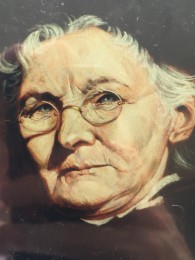
Kieran’s Our City, Our Town Article,
Cork Independent, 28 July 2016
Mother Jones Festival, 28 July-1 August
The 2016 Spirit of Mother Jones Festival/ Summer School will be held in Shandon over five days in Cork city from today, Thursday 28 July until Monday 1 August 2016, designated by Cork City Council as Mother Jones Day. This event celebrates trade union activist, Corn born Mary Harris, known as Mother Jones, and it is “dedicated to inspirational people everywhere who fight for social justice”.
This is the fifth annual summer school/festival organized by the Cork Mother Jones committee since 2012, when the committee erected a plaque in Shandon to honour “the most dangerous woman in America”. She was born in Cork in late July 1837 and baptised in the local North Cathedral on 1st August that year. She lived through the famine in Cork and later left with her family for Canada. She later emerged as one of the most celebrated and feared union leaders in the USA and was a passionate defender of miners and the rights of workers and those discriminated against everywhere.
The 2016 Summer School will be spread over five days with talks, discussions, films and music each evening. According to Jim Nolan of the Cork Mother Jones Committee; “The 2016 festival and summer school will again see a wide variety of talks, films and music associated with social justice issues, the history of the labour movement, and human rights. We are extremely proud that this is the fifth festival and we have managed to retain the unique, convivial and informal character of the summer school located as it is in Shandon the very heart of Cork city. These two speakers will recreate the atmosphere of Cork city at the time a young Mary Harris lived here. Our full five day programme of talks, films, music and exhibitions will be announced shortly”.
The Cork Mother Jones Committee is delighted to confirm the attendance of author Laurence Fenton, who has written an account of the visit of Frederick Douglass to Cork in 1845, when a young Mary Harris lived in the city. Frederick Douglass, a former slave and later anti-slavery campaigner spent 3 weeks in Cork city in October 1845. It is certain that the later Mother Jones would have been influenced by Douglass in the USA afterwards. Laurence Fenton will present a lecture on the visit of Frederick Douglass to Cork also at the Maldron Hotel on Friday morning 29 July at 11.30.
The Cork Mother Jones Committee is also delighted to announce that the historian Dr Sean Pettit will appear at the 2016 Spirit of Mother Jones festival and summer school. Sean will speak about the Cork in the eighteenth century and also Shandon, at a time when the young Mary Harris was born and who afterwards became the trade union leader Mother Jones. Sean will speak on Friday afternoon 29 July at 2.30 at the Maldron Hotel.
The programme of events begins on this evening, Thursday 28 July at the Firkin Crane in Shandon when the President of SIPTU, Mr Jack O’Connor will deliver the 2016 Mother Jones Lecture entitled “Organising to win – what is to be done!” Jack O’Connor is probably the best known trade union spokesperson in Ireland and is a passionate and straight talking speaker. He will discuss the future of the trade union movement.
Among the confirmed participants for 2016 are journalist and author Justine McCarthy, who argues passionately for the underdog in her newspaper columns and in her television appearance. Writer and BBC correspondent and award winning journalist Fergal Keane, and former Cork resident, will discuss human rights across the world. historians such as Luke Dineen and Laurence Fenton will also contribute to various topics.
Former Supreme Court Justice Catherine McGuiness will debate the ongoing use of Direct Provision, where over 4000 people still remain trapped in a lecture entitled “Direct provision – not the Answer!” Mrs Catherine McGuinness will speak at the Firkin Crane on Friday 29 July at 7.30pm.
The story of extraordinary Wallace Sisters will be told by Anne Twomey of the Shandon Area History Group on Saturday 30 July at 2.30pm at the Maldron Hotel. Now a lifeless vehicular short cut, St. Augustine Street in Cork City is barely noticed by many people these days. One might be surprised to learn that many of the most famous names in the revolutionary Ireland 1915 to 1922 came and went with regularity through this street. For at number 13 Brunswick St (later 4 St. Augustine St.) was located the small shop of Sheila and Nora Wallace. During the War of Independence these firm engaging sisters went about their day to day shop keeping business and provided a perfect cover for what was a vast beehive of revolutionary activity emanating in their shop.
Located behind their small traditionally fronted tobacconist and newspaper shop with holy pictures and statues in the window and labour pamphlets on the shelves lay nothing less than the Head Quarters of the Cork No 1 Brigade of the Irish Volunteers and I.R.A. It was effectively the intelligence centre of the IRA where messages were efficiently received and delivered by a huge network of women and men – it was in effect an IRA intelligence General Post Office!
Events as they are confirmed can be viewed on www.motherjonescork.com
Captions:
854a. Mary Harris, aka Mother Jones (source: Cork City Library)
854b. View from St Anne’s Church Shandon of Firkin Crane and Shandon area, present day (picture: Kieran McCarthy)
The Network of Networks, July 2016
Across the Digital Landscape: The Network of Networks
Kieran McCarthy,
Member, Committee of the Regions, EA/ IE
A River of Opportunities:
Bratislava, Slovakia, put quite simply, lingers in the mind.
The newest capital of the EU Presidency can truly and honestly refer to itself as an international crossroads of ideas and people. Located near the state borders of four countries – Slovakia, Austria, Hungary and the Czech Republic, this geography, as well as intensive trading considerably influenced the assembly of nationalities living in the town. Two traditional long-distance European merchant roads crossing this region had a decisive impact. Like two crossed wires they kick-started the engine for Bratislava’s development. The Danubian Road linking the cultures of the Mediterranean and the Orient (as an extension of the legendary Silk Road) with the inlands of continental Europe. The second, the Amber Road, linked countries by the Baltic Sea in the north with southern Europe. Both merchant roads crossed the Danube river by ford and both created the basic pattern of the main city thoroughfares of Bratislava in the Middle Ages. A thousand years later, the focus on themes of connection and transnational have been renewed on a European scale in Bratislava and within the surrounding country of Slovakia. The Danube, still an international waterway, provides the metaphor for a river of diverse opportunities, which flows through these regions.
In Bratislava’s rich eighteenth century architecture and cobbled streets you can see the influences from adjacent countries. The stamp of European funding can be seen in many aspects – the trams, which meanders through its centre and suburbs – on which is stamped Eurotram. The stamp of European Regional Development Fund on an older university wall show that the regional and local governments of this capital mean business in embracing transformation. It continues to transform into one of the EU’s notable capitals. Just like the EU, Bratislava is a work in progress – complete with EU branding, vision, a narrative, solidarity and a modern identity stamp.
The 7th EU Summit of Cities and Regions sought to harness Bratislava’s historic and modern edge, hosting the themes of connect and invest. Connect is perhaps a more positive paradigm to talk about and negotiate than invest. It is easier to connect and provide ideas than negotiate the whys and where-to-fores of financial investment. It was the moment though that Jeremy Rifkin walked out onto the Opera House Hall stage, which added to the game changing thought processes of the Summit. Rooting his two feet in the carpeted stage, the large stage did not deter his confident stage presence. Pausing before he began – in his hand a half a dozen pages complete with notes – he did not look at – he was ready – he drank his glass of water and began his tale centre stage – holding his audience as he bended and flowed, softly and enthusiastically through his narrative. From the beginning, he unfolded and wove a story of intrigue, questions, opportunity and what-ifs. He presented an overview of a global landscape infused by the opportunities of a third Industrial Revolution – a landscape of digital infrastructure – one, which laterally exists across human and computer networks – one where the winds of change will beckon in new business opportunities globally and one, which ushers in cultural transformations in how the world is viewed and life itself is lived.
Across Professor Rifkin’s hour long narrative he questioned the advancement of science and transportation in the twentieth century in the second industrial revolution – building on this he assembled new arguments – a new and modern landscape overview – an elaborate chessboard of sorts complete with moving complex and chaotic parts. He unfurled familiar global problems of climate change, rising energy costs, geo-politics, global migration patterns, unemployment and poverty – all infused with a global society struggling to move these issues on towards solution. His initial thoughts were familiar paradigms – the rising forcefulness of climatic storms, declines in traditional industries, and inflation and economic downturn. He presented all the ingredients to create a troubled second decade in this early twenty-first century. This troubled world searches for changes amidst the quickening pace of globalisation. It is true to say that our regions, town and cities have become globalised – glocalities – whereby survival on your own, is almost impossible. Technology has sped up the need for even further interconnection. One must reach out and interact in a network of networks – where ideas come fast and quick in the world of the internet, all leading to what Rifkin’s calls the “Third Industrial Revolution”.
Thinking Smart:
The Third Industrial Revolution, pitches a case about thinking smart – smart in the use of energy, smart in productivity, smart in the business sense, smart in the use of ICT and its accumulation of big data and smart in its approach to the citizen; the citizen is now the producer and consumer in a smart economy– a “prosumer” as Jeremy Rifkin notes. The smart economy champions the smart citizen agenda. It heralds a kind of restoring of democratic power to the individual – it spearheads a quest to help change the troubled world – a power to feel wanted – a power to embed citizens into lateral networks of communities – a power to test and create ideas with little cost and a power to create frameworks in collaboration in creating the sharing economy – to create a global and lateral sense of place and identity – whereby identity crosses virtual borders with ease and whereby time and space have compressed at rapid rates. We are all connected. Communication has become paramount through mobile phone devices. Failure to have one makes you feel disconnected. People are connected more than ever before in human history.
For years, ICT has been hosting a kind of ‘taking back’ programme in democracy and equality – a move from top-down to lateral government – one of a shared future – a future where courage to change leads as well as ideas – where cultural transformation is at its heart. The digitisation agenda connects to buzz words such as watershed, internationalisation, scaling up, transnational, cohesion, the innovation agenda, a world of networks, synergies, ecosystems, pathways of progression, clean energy, sustainability, the living lab, the discovery process. With such words alone the emerging nodes of how we perceive place-making will release new journeys of discovery into our lives, families, communities, regions, towns and cities.
Our way of viewing of the world has been changing but is to now change further. Those who are connected to the digitised landscape have access to billions of bytes of data, harvested to be used. Just like those who sat in the train carriages during the nineteenth century, those travellers got access to new ways of looking at their enterprise models, stories, local landscapes and regions. They got access to landscapes – physical and mindscapes – they normally would not be allowed to travel across. Physically travellers could look into the backyards of others and see how others lived and survived. They experienced new speeds and began their interest in being connected between town, city and region. Indeed, the tramway system in Bratislava belongs to the oldest systems in Europe. It was in operation two years earlier than the similar ones in Vienna and Budapest. The contribution of Bratislava to developments in aeronautics is also significant. The first attempt at flying a balloon took place here in 1784. Ján BahúR introduced his invention of a helicopter before a military committee, and that was arguably earlier than the Wright brothers. In front of the Bratislava airport building, there is a statue of Stefan Banic, the inventor of the early parachute. Petrovia brothers sold their airship concept to the Duke of Zeppelin. From a height, the scientist could see the bigger picture of urban and rural divides, capturing agricultural practices en mass and recognising potential for crops and regional development. The first electric bulb in Bratislava was switched on in 1884, five years after its invention by Thomas Edison transforming the dark into a form of semi daylight, giving people more choice in staying in or out and engaging longer with their city and communities. The first telephone connection was put through in 1877 bringing people together and further compressing space and time. This part of the world is all about connecting people and places.
Fast forward to modern times and during the Summit delegates heard about the the Hyperloop company. Hyperloop is a futuristic transportation project allowing passengers to travel with the speed of sound – around 1200 km/h. The initial concept has been introduced in 2013 by Tesla’s founder Elon Musk. The first ever cities to be connected by hyperloop are Vienna – Bratislava – Budapest. While it currently takes 1 hour to get from Bratislava to Vienna by bus or train. They aim to cover this distance in 8 minutes by year 2020 According to the Hyperloop company, the travel ticket should not be more expensive than e.20. The system is designed to be earthquake and weather resistant, with each pylon capable of supporting seven passenger Hyperloop tubes and one for security purposes – transporting an estimated 3,400 passengers per hour, and 24 million people each year. Bratislava is a city which envelops and develops opportunities.
Back to the Future:
Being Smart has lit an enterprising fire in Bratislava. However, this ancient city is not alone. The advent of the third industrial revolution brings the principles of smart specialisation to many of the EU’s regions. It brings thought processes rooted in vision and openness, in values of exchange and citizen interaction. It aims to break the silo mentality and putting faith in co-operation and cohesion. Regions become collaborators, enablers of strategies, leaders, recognisers of change, champions of fresh narratives, corporate responsibility and environmental sustainability, and utilisers of sources of energy such as solar and wind.
Regions face re-alignment of their outlook and strategies, from vertical – national to local political agendas towards a lateral movement – an inter-regional agenda. International diplomacy becomes a must. Regions learn from each other. The network of networks puts a value on communication as a must. Concepts such as e-government, e-business and discovery-led programmes make regions livings labs. The alignment of the quadruple helix of government, business, academic and civil society creates a fifth addition or a glue to the helix, that of social inclusion. Young and old can drive the shared economy, and maybe the foundations of global growth will not be just based on economic arguments but will partner with the social as a key to unlocking the EU’s future.
By the time Jeremy Rifkin offered his conclusions to the summit, the audience had been led on a journey through time and space along the paradigms of a new industrial revolution, which will change all aspects of our lives and our place in the world.

